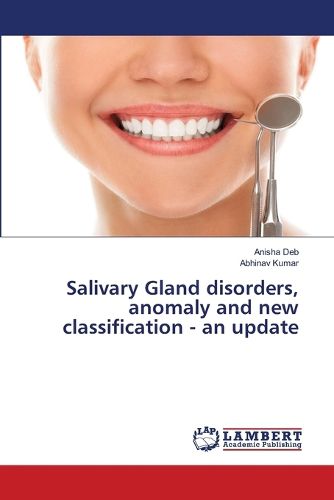Readings Newsletter
Become a Readings Member to make your shopping experience even easier.
Sign in or sign up for free!
You’re not far away from qualifying for FREE standard shipping within Australia
You’ve qualified for FREE standard shipping within Australia
The cart is loading…






This title is printed to order. This book may have been self-published. If so, we cannot guarantee the quality of the content. In the main most books will have gone through the editing process however some may not. We therefore suggest that you be aware of this before ordering this book. If in doubt check either the author or publisher’s details as we are unable to accept any returns unless they are faulty. Please contact us if you have any questions.
Salivary gland disorders encompass a range of conditions affecting the glands responsible for producing saliva. These disorders can arise from various factors, including infections, autoimmune diseases, tumors, and blockages in the ducts. Anomalies in salivary glands can manifest as congenital abnormalities or developmental issues, impacting their function and structure.A newer classification system for salivary gland disorders has been proposed to provide a more comprehensive understanding and better management strategies. This classification categorizes disorders into inflammatory, infectious, autoimmune, neoplastic, and developmental anomalies. Inflammatory disorders include conditions like sialadenitis, which is inflammation of the salivary glands, often due to bacterial infections. Infectious disorders encompass viral infections like mumps and HIV-related salivary gland disease. Autoimmune disorders involve conditions like Sjoegren's syndrome, where the immune system attacks the glands, leading to dry mouth and eyes. Neoplastic disorders involve benign and malignant tumors of the salivary glands, such as pleomorphic adenoma and mucoepidermoid carcinoma.
$9.00 standard shipping within Australia
FREE standard shipping within Australia for orders over $100.00
Express & International shipping calculated at checkout
This title is printed to order. This book may have been self-published. If so, we cannot guarantee the quality of the content. In the main most books will have gone through the editing process however some may not. We therefore suggest that you be aware of this before ordering this book. If in doubt check either the author or publisher’s details as we are unable to accept any returns unless they are faulty. Please contact us if you have any questions.
Salivary gland disorders encompass a range of conditions affecting the glands responsible for producing saliva. These disorders can arise from various factors, including infections, autoimmune diseases, tumors, and blockages in the ducts. Anomalies in salivary glands can manifest as congenital abnormalities or developmental issues, impacting their function and structure.A newer classification system for salivary gland disorders has been proposed to provide a more comprehensive understanding and better management strategies. This classification categorizes disorders into inflammatory, infectious, autoimmune, neoplastic, and developmental anomalies. Inflammatory disorders include conditions like sialadenitis, which is inflammation of the salivary glands, often due to bacterial infections. Infectious disorders encompass viral infections like mumps and HIV-related salivary gland disease. Autoimmune disorders involve conditions like Sjoegren's syndrome, where the immune system attacks the glands, leading to dry mouth and eyes. Neoplastic disorders involve benign and malignant tumors of the salivary glands, such as pleomorphic adenoma and mucoepidermoid carcinoma.